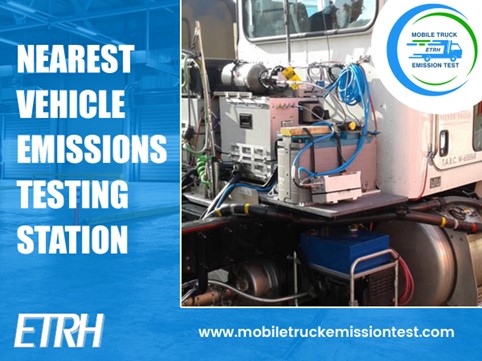What New Vehicles Need to Know About Emissions Testing
Understanding vehicle emissions testing is essential for all vehicle owners, especially those with new cars. As emission standards tighten, it’s crucial to know how these regulations impact your vehicle. In this blog, we’ll explore what new vehicles need to know about vehicle emissions testing stations and how to pass your vehicle emissions test station with ease.
Buying a new vehicle often feels like a fresh start, but it also comes with responsibilities. One important duty you’ll face as a vehicle owner is ensuring your car meets local emissions standards. In many areas, including Ontario, vehicles are required to pass an emissions test before they can be registered. If you're a new vehicle owner, understanding the basics of vehicle emissions testing near you is essential.
Why Emissions Testing Matters for New Cars
Many drivers mistakenly assume that newer vehicles, especially those with lower mileage, don’t need to worry about emissions testing. However, this isn't always true. Even new vehicles must comply with environmental standards that regulate the amount of pollutants released into the air. The purpose of vehicle emissions testing stations is to ensure that vehicles, regardless of their age, are not contributing to air pollution more than necessary.
Vehicles that fail these tests may have problems with their engines, exhaust systems, or other critical components that reduce emissions. For new cars, emissions tests help ensure that all systems are functioning as they should, without malfunctioning parts releasing harmful gases into the environment.
What’s Involved in a Vehicle Emissions Test Station?
When you visit a vehicle emissions test station, the process is typically straightforward. The technician will use equipment to measure the pollutants coming from your vehicle’s exhaust. These tests check for gases such as carbon monoxide (CO), hydrocarbons (HC), and nitrogen oxides (NOx). The vehicle’s onboard diagnostic system (OBD) is also assessed, which can reveal whether any part of the emission control system is malfunctioning.
For new cars, the test is often less invasive than for older vehicles. In many cases, it may only involve a quick check of the OBD system to ensure everything is working properly. If your car has passed its emissions test, you can rest assured that it is complying with local regulations.
How to Prepare for Your Vehicle Emissions Test Station
Even though your car is new, it’s still a good idea to prepare for the emissions test. This includes making sure your vehicle is in good condition. Before your appointment, ensure that your gas tank is full, as low fuel levels can affect test results. If your car has recently been driven a long distance, it may be beneficial to let the engine cool down before bringing it in.
If you’re unsure whether your new car is ready for the test, consult the owner’s manual or reach out to the vehicle emissions testing near you. Many facilities offer tips on how to prepare or may even perform a pre-test check to ensure everything is functioning properly.
When Should You Get an Emissions Test for Your New Vehicle?
In most places, new vehicles don’t need an emissions test until they are a few years old. For instance, Ontario requires that cars be tested after they are four to seven years old. However, if you’re moving to a new area or are uncertain about your vehicle’s specific requirements, it’s a good idea to call a vehicle emissions test station to clarify.
Keeping track of when your car is due for testing is essential. Missing the deadline can result in fines, or worse, failing the test and having to pay for costly repairs to make your vehicle compliant.
The Role of Emissions Testing in Maintaining Air Quality
Even new vehicles can emit harmful gases into the atmosphere. While newer models are typically more efficient, ensuring that all vehicles are meeting emission standards is important for maintaining air quality. Emissions testing contributes to cleaner air by identifying cars that are producing excess pollution, encouraging repairs, and ensuring that the vehicles on the road are meeting the required environmental standards.
The benefits of emissions testing are far-reaching, as it helps reduce smog, improve public health, and contribute to a cleaner environment overall. As a responsible vehicle owner, participating in emissions testing is a small but important way to make a positive impact.
Get Your Vehicle Tested: Don’t Wait Until It’s Too Late
Whether you own a brand-new vehicle or a used one, staying on top of vehicle emissions testing near you is essential. If you’re unsure when your vehicle is due for an emissions test, or if you need advice on passing the test, consider visiting a nearby vehicle emissions testing station. Regular testing helps maintain your vehicle’s performance and ensures that it continues to meet local environmental standards.
Making sure your vehicle meets emissions standards is more than just a requirement—it’s an investment in cleaner air and a healthier future. If you're due for a test, get in touch with ETRH today to schedule your emissions check and keep your vehicle in top shape!

Comments